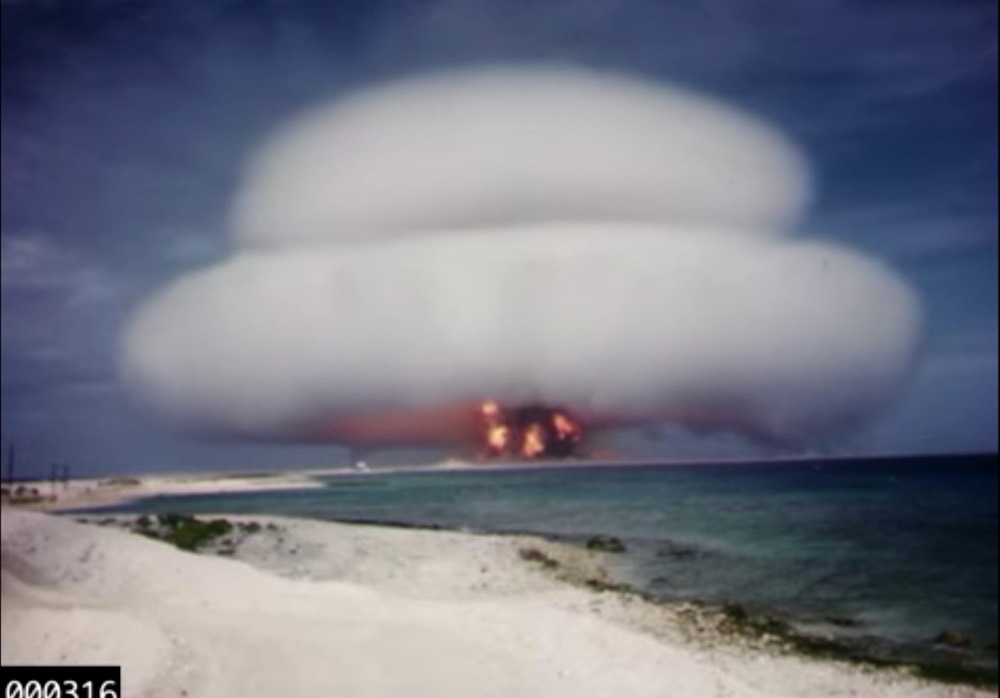Doomsday Films: Footage of Nuclear-Weapons Tests Declassified

After decades spent slowly disintegrating in high-security vaults, thousands of historic films of U.S. nuclear weapons tests have been salvaged, including some that have been newly declassified. The incredible footage shows enormous mushroom clouds ballooning over the horizon in what could be a doomsday flick.
In total, an estimated 10,000 films were created of nuclear weapons tests between 1945 and 1962, according to the Lawrence Livermore National Laboratory (LLNL). For the past five years, a team of researchers led by LLNL weapon physicist Greg Spriggs has been collecting the footage to scan, reanalyze and declassify, before the films fully decompose.
About 6,500 of the films have been located so far, and now, an initial collection of 64 videos, all showing tests conducted by the LLNL, have been made available online. [Top 10 Greatest Explosions Ever]
Spriggs said he and his team are in a race against time to collect and scan the films, because the decomposition process could render the footage unusable.
"You can smell vinegar when you open the cans, which is one of the byproducts of the decomposition process of these films," Spriggs said in a statement."We know that these films are on the brink of decomposing to the point where they'll become useless. The data that we're collecting now must be preserved in a digital form, because no matter how well you treat the films, no matter how well you preserve or store them, they will decompose. … We got to this project just in time to save the data."
Beyond the historical significance of the films, the LLNL researchers said footage of the nuclear tests can also help post-Cold War-era scientists better understand the impact of nuclear weapons and determine whether the aging U.S. nuclear deterrent — nuclear weapons intended to deter other countries from nuclear attacks — is safe, secure and effective.
By comparing the restored footage to the original data sheets for each test, Spriggs found that some of the published data was incorrect. When the tests were conducted more than half a century ago, researchers had to rely on "eyeball measurements" of the nuclear test's fireball and shockwave, according to the LLNL researchers, from each frame captured. Tests were filmed by multiple cameras at different angles to capture around 2,400 frames per second, the researchers said, and about 1,000 analysts were needed to do the work. Now scientists use computers for such analysis, with programs able to take exact measurements from each frame captured.
Sign up for the Live Science daily newsletter now
Get the world’s most fascinating discoveries delivered straight to your inbox.
"We were finding that some of these answers were off by 20, maybe 30, percent," Spriggs said. "We've also discovered new things about these detonations that have never been seen before. New correlations are now being used by the nuclear forensics community, for example."
The videos released thus far range from footage of bomb tests that show the resulting mushroom clouds to videos of underground tests that evaluated bomb detection and potential containment. For example, one of the videos released shows the "Tesla" test of Operation Teapot, which was the first successful test by the LLNL (then called the University of California Radiation Laboratory), according to the Nuclear Weapons Archive.
Another of the videos released, of the "Rainier" test of Operation Plumbbob, shows footage of the violent shock waves caused by an underground nuclear explosion. According to the Nuclear Weapons Archive, the Rainier test occurred on Sept. 19, 1957, at the Nevada Test Site, when a nuclear weapon was fired into a tunnel on the side of Rainier Mesa.
It will take about two more years to finish scanning all of the films, Spriggs estimated, and analyzing and declassifying the footage will take even longer. The ultimate goal of the project is to ensure nuclear weapons are not used in the future, he said.
"We hope that we would never have to use a nuclear weapon ever again," Spriggs said. "I think that if we capture the history of this and show what the forces of these weapons are and how much devastation they can wreak, then maybe people will be reluctant to use them."
Original article on Live Science.











